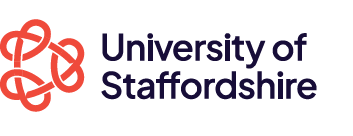Module Descriptors

ADVANCED COMPUTATIONAL FLUID DYNAMICS
MECH71040
Key Facts
Digital, Technology, Innovation and Business
Level 7
15 credits
Contact
Leader: Mohammad Moghimi Ardekani
Hours of Study
Scheduled Learning and Teaching Activities: 102
Independent Study Hours: 48
Total Learning Hours: 150
Assessment
- Examination - 2 hour exam weighted at 50%
- Coursework - Portfolio weighted at 50%
Module Details
Indicative Content
During this module, you will build a strong understanding of unsteady turbulent flow and the numerical approaches that apply to such cases. You will also learn about advanced simulation techniques applied to viscous flows, turbulence modelling and unsteady flow simulation techniques in CFD. Apart from simulation approaches, this module provides a deep insight about numerical flow solving techniques such as discretization of RANS equations using Finite Volume and Finite Difference techniques, time integration schemes (implicit and explicit) for unsteady flow, one and two- equation turbulence modelling techniques (Spalart-Almaras, k-epsilon and k-omega) and wall functions and you will learn about advanced Post-Processing of CFD problems. As an important part of CFD simulation, this module will also include advanced grid generation schemes, turbulent flow grid requirements and grid movement scheme.
Based on the items listed above here is a suggested teaching plan for the module:
Lecture
• Review of the CFD simulation techniques
• Viscous Fluid Flows: Navier-Stokes, Boundary Layer, Laminar, Transient and Turbulent flows
• Turbulence modelling schemes
• Grid requirements for turbulence modelling
• Advanced Grid Generation
• Spatial and temporal Discretization techniques
• Pressure correction Algorithms in incompressible flows
• Grid movement techniques
• Post Processing
Tutorial
• Ansys package: Review of the software
• Ansys/ICEM (Workbench): Preparing the geometry and computational domain
• Ansys/ICEM (Workbench): Advanced Meshing
• Ansys/ICEM (Workbench): Mesh Refinement
• Ansys/ICEM (Workbench): Boundary Conditions and export file for flow solver
• Ansys/Fluent: Importing the mesh file in fluent and initial settings, moving mesh settings
• Ansys/Fluent: Viscous flow simulation
• Ansys/Fluent: Simulation of unsteady flows
• Ansys/Fluent: Post Processing of the results
Based on the items listed above here is a suggested teaching plan for the module:
Lecture
• Review of the CFD simulation techniques
• Viscous Fluid Flows: Navier-Stokes, Boundary Layer, Laminar, Transient and Turbulent flows
• Turbulence modelling schemes
• Grid requirements for turbulence modelling
• Advanced Grid Generation
• Spatial and temporal Discretization techniques
• Pressure correction Algorithms in incompressible flows
• Grid movement techniques
• Post Processing
Tutorial
• Ansys package: Review of the software
• Ansys/ICEM (Workbench): Preparing the geometry and computational domain
• Ansys/ICEM (Workbench): Advanced Meshing
• Ansys/ICEM (Workbench): Mesh Refinement
• Ansys/ICEM (Workbench): Boundary Conditions and export file for flow solver
• Ansys/Fluent: Importing the mesh file in fluent and initial settings, moving mesh settings
• Ansys/Fluent: Viscous flow simulation
• Ansys/Fluent: Simulation of unsteady flows
• Ansys/Fluent: Post Processing of the results
Learning Strategies
This module will enable students to gain understanding, apply knowledge, analyse and evaluate problems and create solutions through a variety of activities, including lectures, lab sessions and tutorials, supported by demonstrations and practical exercises using software packages such as Ansys/Mesh and Ansys/Fluent.
Texts
1. Patankar, S. (1980). Numerical Heat Transfer and Fluid Flow, CRC Press.
2. Chung, T.J. (2010). Computational Fluid Dynamics, Cambridge University press.
3. Anderson, J. (1995). Computational Fluid Dynamics: The basics with Applications, McGraw Hill.
4. Hirsch, C. (2007). Numerical Computation of Internal and External Flows, Butterworth-Heinemann.
5. Schlichting, H., Gersten, K. (2017). Boundary Layer Theory, Springer.
6. Anderson,¿ D., Tannehill, J.C.,¿ Pletcher, R.H. (2012). Computational Fluid Mechanics and Heat Transfer, CRC Press.
2. Chung, T.J. (2010). Computational Fluid Dynamics, Cambridge University press.
3. Anderson, J. (1995). Computational Fluid Dynamics: The basics with Applications, McGraw Hill.
4. Hirsch, C. (2007). Numerical Computation of Internal and External Flows, Butterworth-Heinemann.
5. Schlichting, H., Gersten, K. (2017). Boundary Layer Theory, Springer.
6. Anderson,¿ D., Tannehill, J.C.,¿ Pletcher, R.H. (2012). Computational Fluid Mechanics and Heat Transfer, CRC Press.
Resources
Software package:
A CFD software package capable of unsteady flow analysis such as Ansys/Fluent, Ansys/ICEM
Online tutorials, Youtube, CFD forums such as https://www.cfd-online.com/Forum/ , http://ansysforum.com/index/ and https://studentcommunity.ansys.com/
A CFD software package capable of unsteady flow analysis such as Ansys/Fluent, Ansys/ICEM
Online tutorials, Youtube, CFD forums such as https://www.cfd-online.com/Forum/ , http://ansysforum.com/index/ and https://studentcommunity.ansys.com/
Learning Outcomes
1. Demonstrate viscous flows, laminar and turbulent flow characteristics. (AHEP 3:SM7M, EA6M, EA7M)
2. Demonstrate advanced meshing techniques such as mesh movement, boundary layer meshing strategies. (AHEP 3: SM7M)
3. Develop deep understanding of numerical simulation of viscous and unsteady flows, finite volume techniques. (AHEP 3: D9M, EA6M)
4. Produce stationary/ moving/sliding mesh for turbulent problems (AHEP 3: EA7M)
5. Design numerical solutions for advanced CFD problems using Ansys/Fluent tools applicable to complicated turbulent and unsteady problems. Reflect on the success of solution design. (AHEP 3: D9M)
6. Design advanced post-processing and visualization (AHEP 3: SM7M)
2. Demonstrate advanced meshing techniques such as mesh movement, boundary layer meshing strategies. (AHEP 3: SM7M)
3. Develop deep understanding of numerical simulation of viscous and unsteady flows, finite volume techniques. (AHEP 3: D9M, EA6M)
4. Produce stationary/ moving/sliding mesh for turbulent problems (AHEP 3: EA7M)
5. Design numerical solutions for advanced CFD problems using Ansys/Fluent tools applicable to complicated turbulent and unsteady problems. Reflect on the success of solution design. (AHEP 3: D9M)
6. Design advanced post-processing and visualization (AHEP 3: SM7M)
Additional Details
Written exam of 2 hour duration (50%) covering learning outcomes 1, 2 and 3. Meeting AHEP 3 Outcomes SM7M, EA6M. A portfolio of work undertaken within the module (50%). The portfolio will cover the specific items raised in the indicative content and will address the learning outcomes 4, 5, and 6. Meeting AHEP 3 Outcomes SM7M, EA7M, D9M.
Practice formative class tests will be undertaken during the module and formative guidance and feedback will be provided in tutorial sessions within the class.
Practice formative class tests will be undertaken during the module and formative guidance and feedback will be provided in tutorial sessions within the class.